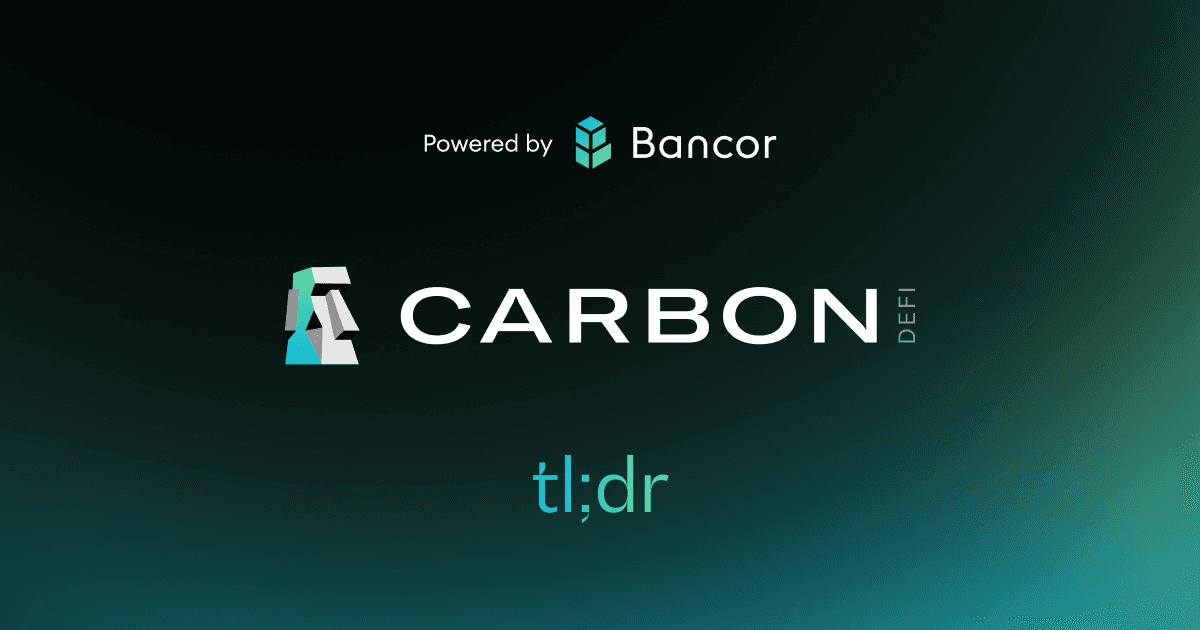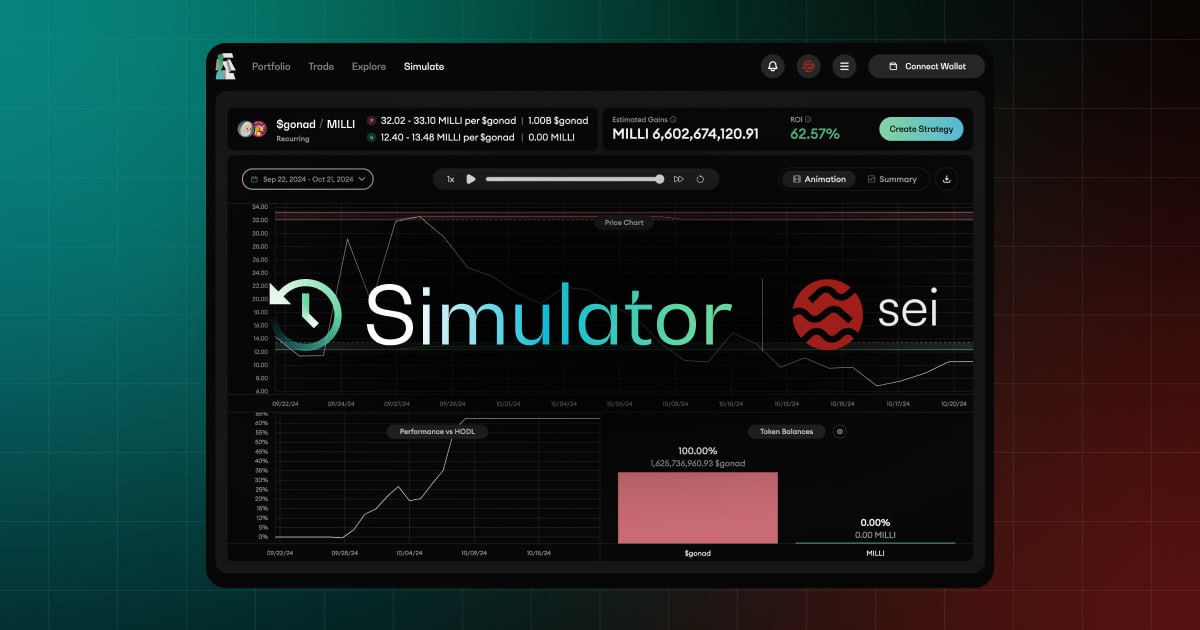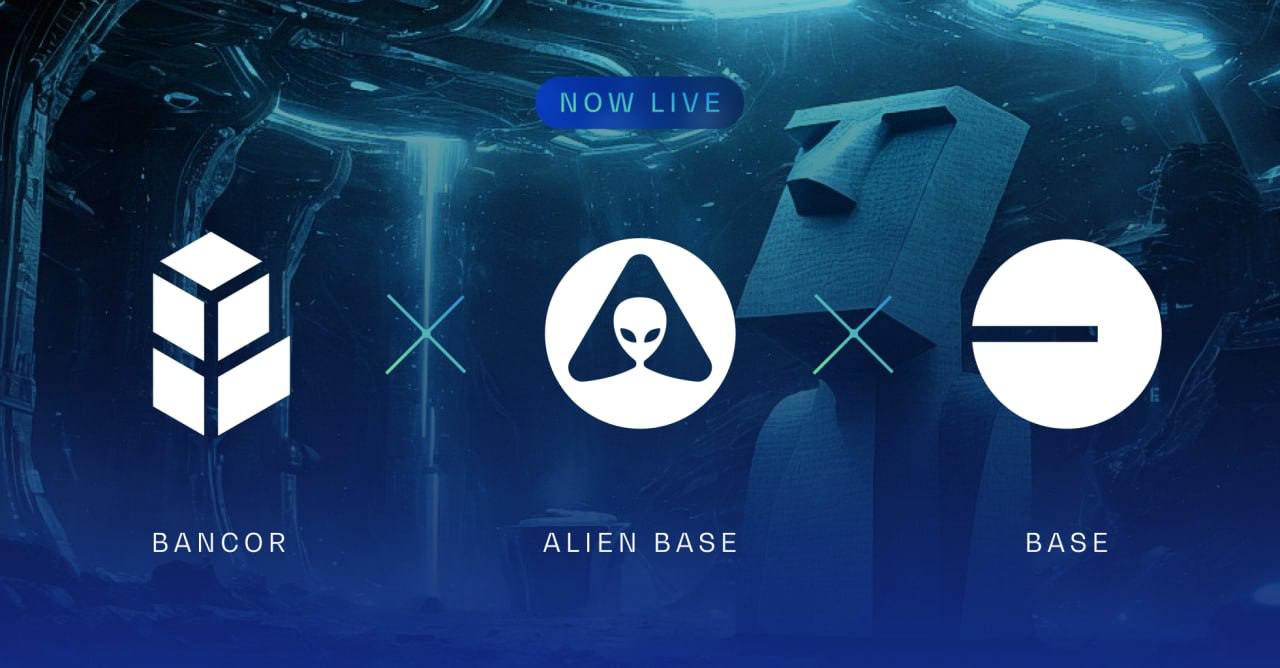One may observe that onchain trading seems to be trending towards greater sophistication. What were once bespoke methods in automation are becoming increasingly mainstream, and market demand for these utilities is saturating.
A pioneering new technology from Bancor, Carbon DeFi, empowers traders to perform maneuvers with confidence and ease that are prohibited by conventional AMM and concentrated AMM designs, setting a new standard for what a trading platform can achieve, and unlocking new possibilities for what you can accomplish this bull run. Carbon DeFi is engineered with a personalized view of access to DeFi as a core principle, which provides an unparalleled level of control, tailored specifically to meet the individual demands of its users.
Carbon DeFi is an island unto itself; it is a unique feature among the suite of other DeFi primitives with a credible claim to being among a very short list of indispensable tools for serious onchain trading. To substantiate this, the sections below present a detailed overview of the separate components from which the awesome power of Carbon DeFi emerges.
Superior Order Types and Novel Capabilities
Adjustability Features
Built in Execution Bot
Backtesting Simulator
Advanced Activity Tracker
The Technology at the Core
Superior Order Types and Novel Capabilities
Prior to discussing the advanced orderbook-like features of Carbon DeFi, it is important to note that strategy makers do not incur any gas or trading fees upon order execution. Paying the gas is exclusive to the act of strategy creation or modification, which means that the strategy can trade many times without incurring any further costs.
It should also be emphasized that Carbon DeFi’s order types are a natural expression of its smart contracts, which were deliberately designed to eliminate dependency on external third parties such as oracles, hooks, and keepers, thus eliminating common attack vectors including oracle manipulation and other major security concerns in DeFi. Carbon DeFi has also undergone three extensive audits prior to release.
Limit Orders: Precision at Its Finest
Carbon DeFi revives the essence of traditional trading behaviors with native Limit Orders. This feature allows traders to set exact buy or sell prices, mirroring the functionality found in centralized exchanges, without sacrificing the decentralization ethos. The key advantage here is the elimination of trading and gas fees on filled orders, providing a cost-effective solution for strategic placement within the market. This feature should feel familiar both in its presentation and operation to anyone who has used limit orders on their preferred CEX.

Range Orders: Scale In/Out
Carbon DeFi introduces Range Orders, an exclusive feature that sets Carbon DeFi apart. Range Orders enables traders to enumerate an enormous collection of discrete limit orders over a given price interval, which is a mainstay behavior of scaling-in and -out of positions near technical support and resistance levels, respectively.
For example, a trader can set an order to sell Ethereum (ETH) beginning at $4,500 and completing at $4,700. For 1 ETH, that is equivalent to a million million million discrete limit orders on a conventional order book.
This level of fine structure is ideal for capitalizing on uncertain market fluctuations, supporting a tailored strategy that traditional order types cannot compete with.

Recurring Orders: Automated Fading Strategies
Carbon DeFi embraces trading automation trends with Recurring Orders, an innovative feature that capitalizes on market volatility by seamlessly connecting a buy order and a sell order, “fading” between them (using the common vernacular) Once an order is filled, the acquired tokens automatically fund the opposite order. This process creates a perpetual cycle of buying low and selling high at user-defined levels, mimicking the actions of a trading bot or grid trading system. This cyclic process leads to the accumulation of tokens and the compounding of profits, simplifying what would typically be a complex manual trading operation.
In addition to linked orders and rotating liquidity, Carbon DeFi’s automated recurring orders offer another unique ability. Because makers have zero obligation to fund both orders in their strategy, they gain the ability to only fund one order, effectively creating a limit order with funds they don’t yet have.
Linked order types are customizable; you can link limit-limit, range-limit, limit-range, or range-range orders to align with your own expectations of the oncoming market.

Overlapping Liquidity: The Short-Straddle (or Short-Gamma) Concentrated AMM Position
A special arrangement of linked range orders, Overlapping Liquidity is the newest addition to Carbon DeFi’s suite of order types, and represents a next-gen, individual concentrated liquidity position. Carbon DeFi allows traders to create overlapping liquidity strategies within any price range in a gas-efficient manner, and unlike traditional concentrated liquidity models, Carbon DeFi makers are not constrained by preset “fee tiers”. Overlapping Liquidity empowers traders to choose their own, arbitrary spread (aka fee tier).

Ease of Adjustability
Carbon DeFi elevates onchain trading with its exceptional adaptability, allowing traders to quickly fine-tune strategies in response to market shifts or opportunities. The combination of Carbon DeFi technologies, an intuitive interface, and versatile order types streamlines adjustments, enhancing agility and potential success in the decentralized finance landscape.

Modify Pricing
Modify pricing allows makers to quickly adjust the prices they choose to buy and sell their tokens, without having to cancel orders, withdraw funds, redeposit funds, or create new orders.
Modify Position Size: Add and Withdraw Funds
Funds may be added to, or withdrawn from a strategy at any point, without sacrificing the strategy object in the smart contract. Therefore, strategies are reusable.Partially withdraw or withdraw in full, without sacrificing the smart contract elements of the strategy inside the system. Withdrawing, rather than deleting, gives makers the opportunity to return to their strategy later, modify their position size and price targets, without paying the gas for creating a new strategy from scratch.
Pause
Pausing trading means tokens within the respective recurring limit order are no longer available for takers to trade against.
Unpause
Reactivate trading at the maker’s desired price points.This level of adaptability is a rare attribute in the decentralized finance space, and a valuable one, given that market conditions can shift dramatically in moments.
Efficient Execution: A Trading Bot/DEX Hybrid

The Arb Fast Lane, also developed by Bancor, is an open-sourced, permissionless, arbitrage framework woven into the fabric of Carbon DeFi. It acts as a bridge between the markets being made on Carbon DeFi, and the entire liquidity base of the chain it is deployed on, wherever it may be. This arrangement ensures timely order execution for makers on Carbon DeFi while also providing a unique avenue for market participants to engage with DeFi in a manner akin to passive mining operations.
The merge of Carbon DeFi and the Arb Fast Lane Protocol underscores a hybrid approach to onchain market making systems, from which emerges something that truly resembles a traditional “trading bot”. This qualifies Carbon DeFi as a unique and powerful tool in the DeFi space, combining custom trading strategy capabilities with novel order types, improved order execution, and automated market arbitrage.
Simulator: Strategy Backtesting
The Carbon DeFi Simulator emerges as a critical tool for traders seeking an impartial insight into trading opportunities, particularly against exotic token pairs. The simulator allows users to investigate historical market data and inspect price charts for tokens with any other token acting as numeraire (in contrast to common USD, ETH and BTC denominations). Moreover, the simulator allows users to measure the performance of Carbon DeFi strategies executed against the chart of their choosing.
The ultimate purpose of the simulator is to provide users with the means to develop an intuition for Carbon DeFi’s features, and translate their learnings from examination of the historical data to creating an active position. The seamless integration of the simulator within Carbon DeFi’s interface ensures a fluid transition from strategy testing to execution, facilitating a streamlined and informed trading experience.
The simulator stands out with its customizable inputs, catering to a diverse range of trading strategies and preferences. Users can select from various order types, including “Recurring Orders” and “Overlapping Liquidity,” set precise price targets, and allocate budgets with flexibility. Upon completing a simulation, traders gain access to detailed analytics, including dynamic charts, a summary of performance, and a downloadable Trade History Log, offering deep insights into the mechanics of Carbon DeFi and its interactions with the market.
Advanced Activity Tracker
The newest feature in Carbon DeFi’s UI was just introduced with the rollout of Trading Activity, where users can dive deep into the trading activity linked to their strategies along with a bird’s eye view of the trading activities system-wide, all updated in real time every 30 seconds.
Carbon DeFi users have easy access to a detailed display of everything they need to know about the performance and trading history of:
A Specific Strategy
All Your Strategies
System-Wide Strategies
Prior to this feature release, collecting such data meant navigating through the complexities of smart contracts or depending on dune queries for insights — a necessity still present in other DEXes, particularly AMMs. With the integration of strategy activity into the Carbon DeFi user interface, accessing this information has become effortlessly straightforward and efficient.

The Technology at the Core: A Bancor Innovation
Carbon DeFi is powered by an entirely new technology developed by Bancor, which should come as no surprise to anyone familiar with the history of the project.
Bancor has always been at the forefront of DeFi innovation, beginning in 2017 with the invention of bonding curves, pool tokens, and the AMM — which still remain extensively used across the industry.
2017: Constant Product
In 2017 Bancor revolutionized the world of decentralized finance (DeFi) by introducing the first AMM with Constant Product technology. This innovation empowered liquidity providers to offer tokens across the entire price spectrum, ensuring liquidity at every price point, especially beneficial for new tokens.
2020: Concentrated Liquidity
Building upon their groundbreaking work, in 2020 Bancor introduced Concentrated Liquidity, then referred to as Amplified Liquidity. This technology addressed perceived shortcomings of the constant product model, reducing price slippage relative to the available liquidity, by placing bounds on the price levels where trading is supported.
2022: Carbon DeFi– Asymmetric Liquidity and Adjustable Bonding Curves
Fast forward to 2022, Bancor’s trailblazing spirit continues with the introduction of Carbon DeFi, powered by their latest invention, Novel Invariant Function and Asymmetric Liquidity Pools, now referred to as Asymmetric Liquidity and Adjustable Bonding Curves. Asymmetric Liquidityutilizes two separate adjustable curves, one for buying and one for selling, reshaping the DeFi landscape once again.
2023: The Arb Fast Lane Protocol
First announced in March 2023, this first-of-its-kind permissionless arbitrage bot was developed to allow any user to perform arbitrage between the Bancor ecosystem and external exchanges, with 50% of the trade rewarded to the caller. The Arb Fast Lane has since received significant upgrades and has become an integral component to the efficient order execution of Carbon DeFi and all third party deployments.
Carbon DeFi: The Pinnacle Platform for Onchain Traders
With its comprehensive suite of advanced order types, hybrid DEX/Bot architecture, and Backtesting Simulator, Carbon DeFi stands as the epitome of innovation and trading sophistication in the DeFi space. From the precision of Limit Orders to the strategic flexibility of Range and Recurring Orders, and the level of control offered to Overlapping Liquidity strategies, Carbon DeFi equips traders with the tools they need to navigate the volatile crypto markets effectively. It’s more than a platform; it’s a gateway to maximizing trading potential, making Carbon DeFi the ultimate tool for sophisticated traders aiming to stay ahead in the fast-evolving world of decentralized finance.
Deployments
2024 has kicked off with remarkable momentum, propelled by the expansion of Bancor technologies on multiple networks, including:
Bancor Deployments of the Arb Fast Lane Protocol
Licensed Third Party Deployments of Carbon DeFi’s Smart Contracts
Mantle by Velocimeter
Base by Velocimeter
Fantom by Velocimeter
Not on Ethereum, Base, Fantom, or Mantle? Still good news for you too, as a slew of deployments are on the horizon, including anticipated launches on Arbitrum, Linea, Blast, Sei, Canto, Scroll, Metis, Movement, Shardeum, and BSC.
Looking to the future, the potential for Bancor, Carbon DeFi, and the Arb Fast Lane Trading bot to reshape the landscape of onchain trading is boundless. With each new integration and deployment, traders are equipped with more powerful tools and wider access to markets, ensuring that the best is yet to come. Stay tuned, as the journey ahead will be filled with groundbreaking developments that will continue to elevate the trading experience for everyone involved.





